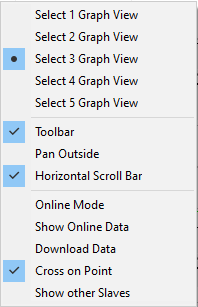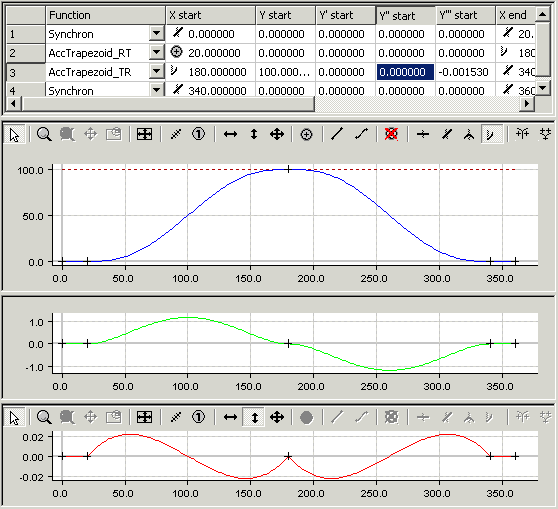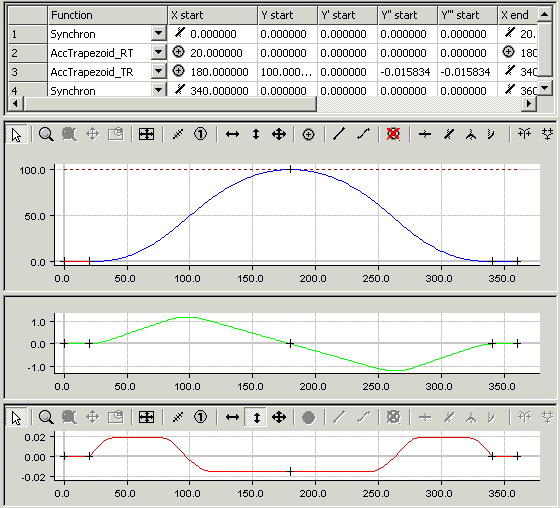Example 5
The procedure for creating a motion diagram is illustrated in this simple example.
The task:
The following slave motion is to be implemented for a rotation of the master axes from 0 to 360 degrees.
- A rest (stationary slave axis) between 0 and 20 degrees.
- A 180 degree turn at a slave position of 100.
- A rest (stationary slave axis) between 340 and 360 degrees.
- In the tree structure, create a master and its corresponding slave via MOTION > Tables (see Introduction).
- After selecting Slave 1 in the tree structure, both the graphic window and the table window appear.
- In the graphic window, click the approximate positions of the points in the window using the Insert Point command.
The corresponding values will then be inserted into the table window.
- To turn the motion plan into a motion diagram, you now need to add some information.
- For the first and fourth sections, use the Synchronous Function command to define a linear motion by clicking in the corresponding sections.
- In the second section in the table, select the function type acceleration trapezoid from rest to turn (AccTrapezoid_RT: Rest in Turn) and in the third section as acceleration trapezoid from turn to rest (AccTrapezoid_TR).
By right-clicking and selecting Select Graph 3 View, the velocity in the second graph window and the acceleration in the third graph window are displayed in addition to the slave position in the first graph window.

The size of the windows can be changed interactively by positioning the mouse on the edge and moving it with a left click.
- To ensure that the exact positions are realized, enter them now in the table view.

Since the boundary conditions at point (180,100) are still such that the second derivative is zero, the display shown above is obtained.
Here, however, 5th order polynomials are still used for the function, since the acceleration trapezoid cannot meet these boundary conditions.
If the point is now interactively moved in the negative direction at the master position of the turn in the acceleration graph, the acceleration trapezoid can be used from a defined acceleration.

The acceleration at the turning point can then be further manipulated interactively.